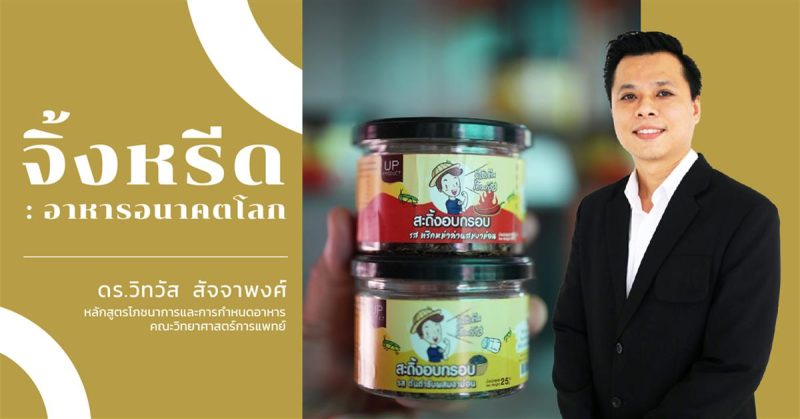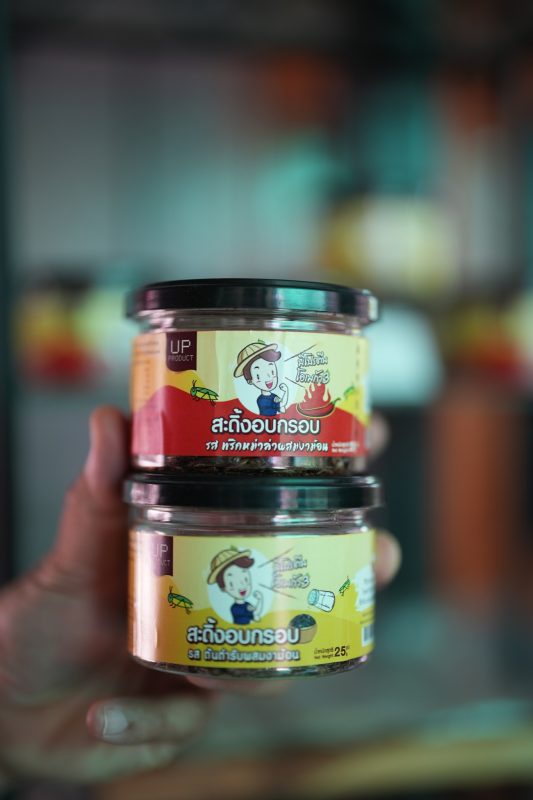Thailand has high potential as a source of insect-based food. There are more than 300 species of edible insects and there are already production and sales of insects for human consumption. In present-day Thailand, there is a food innovation city project called "Food Innopolis," aimed at increasing budgets for research and development in food preservation and processing. Roasted crickets contain approximately 50-55 grams of protein per 100 grams of weight, which is higher than protein sources from general meat such as fish, pork, and chicken, which have approximately 20-30 grams per 100 grams of weight only.
An example of cricket processing from the author's own work is "crispy sa-ding" (a UP product). It was found that crispy sa-ding still has weaknesses. It is rancid if stored for a long time, which is why it must be processed to reduce moisture as much as possible. Therefore, processing it by grinding it into a powder is interesting, such as cricket protein powder for adding to other types of food, like sprinkles, or mixing with porridge, rice, or khanom jeen to enhance protein content. It is used to make cricket crackers, Cricket Cookies, Cricket Spaghetti, Cricket Noodles, Cricket Red Eye Chili Paste and cricket sausage, etc. Food products processed from cricket protein powder are suitable for people who are health conscious. There is a need for high amounts of protein. It is suitable for specific purposes, such as elderly people who have difficulty eating meat protein, athletes who want to build muscle or individuals who aim to lose weight by reducing carbs and increasing protein intake (following a low-carb, high-protein diet).
Currently, the author has a budget from National Innovation Agency (NIA), Innovation and Technology Transfer Institute, University of Phayao (UPITI) develops a high-quality cricket farm, together with the company Rawit Farm Interfood Company Limited which is located at Ban Tham Subdistrict, Dok Khamtai District, Phayao Province, to create a comprehensive cricket farming learning center to support people coming to study and learn how to properly cultivate crickets. This consists of a learning center on processing cricket products to add value, and a prototype of a vertical cricket farm (Vertical Insect Farming) equipped with an automatic control system. We sincerely hope that this will serve as a valuable learning resource for students, teachers, researchers in educational institutions, and interested groups in general. The author encourages everyone to contemplate what would happen if, one day, we were in a state of war, faced a severe epidemic, or experienced a disaster, forcing us to live in a relatively confined area. Where can we find a reliable source of protein if not from insects or crickets, which require minimal space for cultivation? Moreover, the raising period is not long, it requires little food and water, and reduces the problem of greenhouse gases as well.
Finally, I would like to ask you to keep an open mind. "Nong Cricket," a small living creature, is an important protein source for everyone and represents the future of food for all.
Source: University of Phayao

